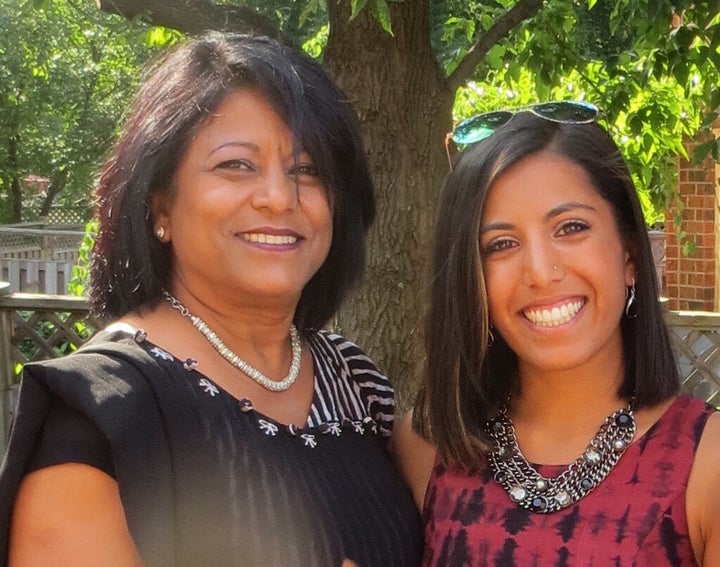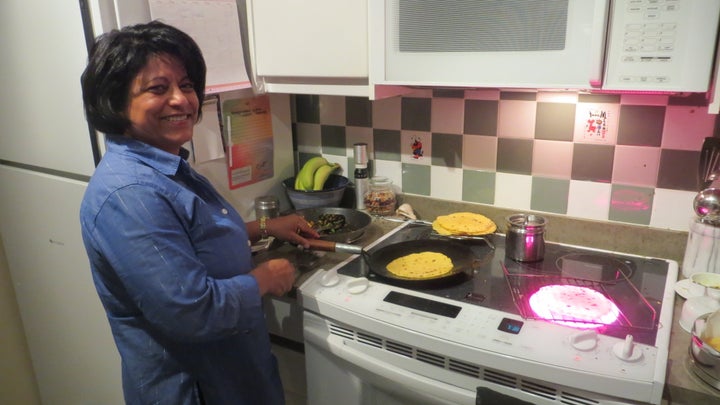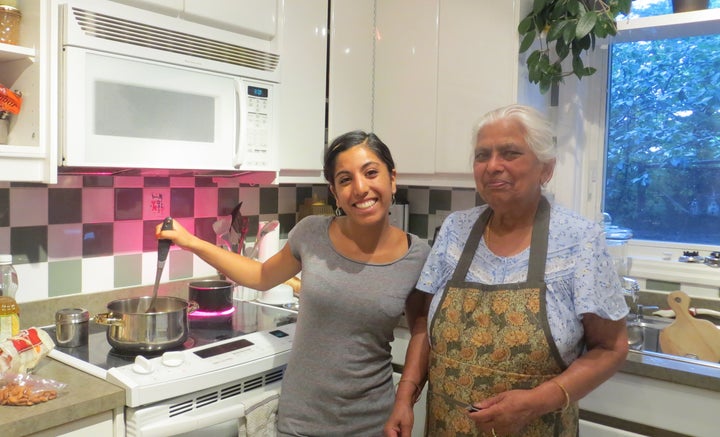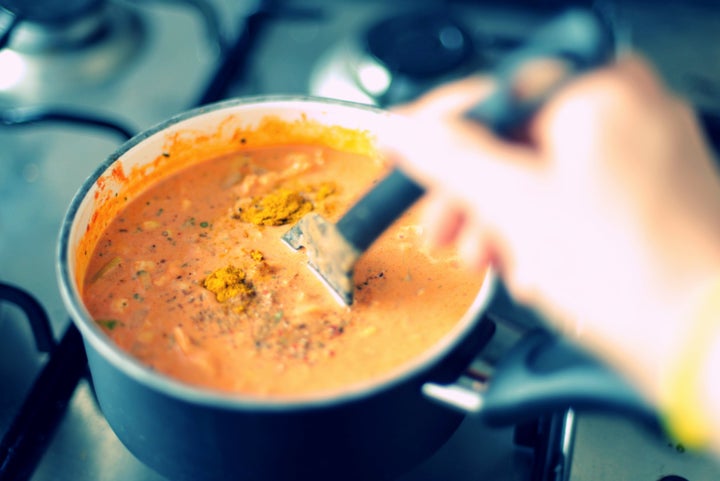
It was early November, and as my Uber pulled up to my cousin’s home, I could see that it was already covered in Christmas lights. Throughout my childhood, we were always the first on our block of suburban Ottawa to decorate with lights, but it’s not because we were eager for Christmas. My mother was dedicated to celebrating the cultural festivals she grew up with in India with as much pomp and sparkle as Canadian holidays. The lights were left up for Christmas, but they were put there for Diwali.
The Indian festival of lights known as Diwali, and sometimes Divali or Dipawali, is a five-day event celebrated by Jains, Hindus and Sikhs. For some, Diwali marks the new year. It signifies the triumph of good over evil, light over darkness, and for many, it is the biggest holiday of the year — which is why, as a kid, I described it as “Indian Christmas.”
I’d typically bring store-bought mithai (sweets), diyas and the occasional pack of fireworks to the festivities. This year was different. For the first time, I was — cautiously — bringing an Indian dish I had cooked myself.

Growing up, my mum’s ability to whip up daal, roti, subji and rice, and serve it with her homemade dahi (yogurt), seemed ingrained in her in a way that wasn’t in me. When I moved out for university, my daily menu changed from multi-dish Indian meals to pastas, omelettes and quinoa salads. Simple dishes that didn’t draw any unwanted attention from non-Indians unfamiliar with their “exotic” smells or appearances.
I never cooked for pleasure, I cooked to survive. So even when my friends entered the working world and went from KD to making elaborate dinners and hosting dinner parties, I held back, bringing wine and store-bought contributions, and feeling like an ineffective adult. Feeding myself was one thing, but I didn’t trust my skills to serve others.
As I entered my 20s, Indian food in particular felt like something I should be able to make. Being away from my mum’s cooking meant I craved the meals that I once complained about. And that hunger intensified when she passed away in 2015.
“The one thing I couldn’t replicate was her cooking. I hadn’t learned, and now my teacher was gone.”
My mum battled ovarian cancer on and off for eight years. In that time, there were long stretches where she was unable to cook, either because she wasn’t allowed to be around high heat or because she was too drained from chemo. Our friends and family stepped in, stocking our freezer with everything from homemade vegetarian borsht to fully prepped Indian meals. Since I lacked actual cooking skills (and confidence in the kitchen), my contribution was cleaning up.
My mum had tried a few times to teach me the basics of Indian cooking — how to test the oil with jeera (cumin) to see if it was hot enough, and how to layer spices for just the right taste. But watching her throw ingredients together by feel rather than measurement, guided by years of experience, seemed more like a show than a tutorial.

She was an Indian adult making Indian food. Born and raised in Canada, and unable to do the same, I didn’t feel confident enough to make the same claim. So when non-Indian friends would ask me how to brew authentic masala chai or tell me when they made a particularly good butter chicken, my response was generally a thumbs up and a reminder that my ethnic heritage does not make me an expert on Indian cuisine.
I’ve realized that being Indo-Canadian doesn’t mean that both sides of your identity feel equal. In fact, for me, it was more of a 30-70 split. I felt Indian in that I celebrated holidays like Diwali, but I didn’t fully understand the meaning behind all the traditions. I wore Indian clothes to cultural events, but couldn’t tie my own sari. I grew up eating Indian food, but couldn’t cook it myself.
But after my mum died, I craved anything that would remind me of her. I kept piles of her clothes and jewellery, and replayed videos to hear her voice. The one thing I couldn’t replicate was her cooking. I hadn’t learned, and now my teacher was gone.

I turned to my mum’s three sisters for guidance. One taught me how to make matar paneer, my all-time fave, as I furiously scribbled down detailed notes. Another one of my aunts, who is a registered dietician and has authored multiple Indian cookbooks, taught me rajma (kidney bean curry) and the staple yellow daal, which my mum used to make when I was sick.
I quietly practiced these recipes, sampling them on my own and only sharing them with my non-Indian friends. Serving it to Indians felt like going from amateur to pro. I was afraid that the aunties (i.e. my mother’s generation), who seemed naturally skilled at whipping up these complex dishes, would see right through my attempt like they did when Starbucks started selling “chai tea.” They would see my dish, and by extension me, as inauthentic.
Then, I tasted my dadi’s coconut lochi (bottle gourd) curry. Having grown up in Fiji, my dadi’s meals often combined North Indian flavours with Fijian ingredients, like dalo leaves. Her coconut curry wasn’t a recipe she had grown up with, but she received the recipe from her sister shortly after my mum passed away.

The dish uses Indian spices like mustard seeds and turmeric — which, thanks to my mom, I had sitting next to my stove in a fully stocked masala dabba, a round tin spice container that is a staple in Indian kitchens — and combines those traditional flavours with the Fijian influence of coconut milk. It is basically my dadi’s heritage in a dish.
I asked my her to teach me one day, going through each step slowly as I took notes and asked a lot of questions. She later taught my dad. And with practice, and repeated phone calls for guidance, this recipe became a new taste of home. While it didn’t curb my longing for my mum’s cooking, it was the beginning of an expanding culinary tradition between me and my dad, one that we are still building.
As I pulled up to my cousin’s home on Diwali last year, that’s what I had in my lap — my very own homemade curry. I had spent the day cooking it using cauliflower and potatoes instead of the more difficult-to-find lochi.
Inside the house, I placed the dish on the buffet in a long line of CorningWare. Sure, there was a bit too much ginger, and the cauliflower florets had slightly fallen apart, but seeing people add my curry to their plate was an unexpected milestone. Between my struggle to navigate my cultural identity, the loss of my mum and my insecurities about being an adult, I had finally embraced what I could bring to the table.
HuffPost Canada’s “Born And Raised” is an ongoing series featuring the stories and perspectives of second-generation Canadians. Want to join the conversation? Email us at bornandraised@huffpost.com.
Have a personal story you’d like to share on HuffPost Canada? You can find more information here on how to pitch and contact us.
Also on HuffPost: